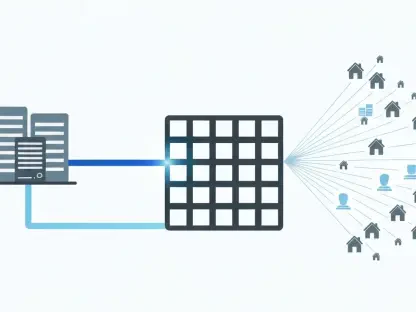In a world increasingly driven by data, mastering the right tools is essential for data scientists to analyze, visualize, and interpret data effectively. This article outlines the must-know tools that will help data science professionals remain competitive and advance their careers. Data science is described as the backbone of modern business decision-making. In today’s data-driven economy, organizations leverage data to derive insights, predict market trends, and drive profitability. Data science aids businesses in streamlining operations, enhancing customer experiences, and developing innovative products. Its applications are ubiquitous, ranging from personalized recommendations in e-commerce to fraud detection in banking and predictive maintenance in manufacturing, thereby transforming industries globally.
Given the surge in data-driven strategies, the demand for skilled data science professionals has skyrocketed. Sectors such as healthcare, finance, retail, and logistics are actively seeking experts in data analysis, machine learning, and data engineering. Market reports predict that data science job roles will grow by over 30% annually, highlighting it as one of the fastest-growing and highest-paying career paths.
Key Data Science Tools in 2025
Programming Languages
Python is celebrated for its simplicity, flexibility, and extensive library ecosystem, making it the most popular programming language in data science. It supports data manipulation, statistical analysis, and machine learning through libraries like Pandas, NumPy, and scikit-learn. Python’s open-source nature and large community make it a preferred choice for both beginners and experts.
R is another statistical computing language widely used for data analysis, visualization, and statistical modeling. R excels in tasks requiring complex statistical computations and data visualization, leveraging popular libraries such as ggplot2, dplyr, and caret. This makes it a preferred tool for academic research and data-heavy industries like healthcare and finance.
Python-Based Data Analysis Tools
Pandas is primarily used for data manipulation and analysis, offering powerful DataFrame structures that are essential for working with structured data. It simplifies the process of data cleaning and preparation, making it a go-to tool for data scientists. Handling missing data, transforming data formats, and aggregating data are some of the functionalities Pandas provides that streamline data analysis tasks.
NumPy is known for supporting large-scale numerical computations and operates with multidimensional arrays, making it indispensable for scientific computing. Its ability to perform complex mathematical operations efficiently is highly valued in the data science community. Whether it’s matrix multiplication or statistical calculations, NumPy’s integration with other libraries amplifies its utility in various data science projects.
SciPy is utilized for scientific and technical computing tasks, providing modules for optimization, integration, and statistics. This makes it a favorite among data scientists who need to perform scientific calculations. Similarly, Scikit-learn is a robust machine learning library that offers algorithms for classification, regression, and clustering, making it a staple in machine learning applications. It is used across industries for tasks ranging from identifying customer segments to predicting financial fraud.
Open-Source Data Science Tools
Jupyter Notebook is an interactive environment for coding, data analysis, and sharing results. It is widely used in data science for its flexibility and ease of use, allowing data scientists to create and share documents that contain live code, equations, visualizations, and narrative text. This interactivity makes Jupyter Notebooks indispensable in data science education and collaborative projects, providing a seamless environment for iterative analysis and sharing insights.
Apache Spark is a big data processing tool that enables large-scale data processing and real-time analytics, presenting a faster alternative to Hadoop. Its efficiency in handling big data makes it a crucial tool for data scientists working with large datasets. The real-time data processing capabilities of Apache Spark are essential in scenarios like detecting network intrusions or performing predictive maintenance on industrial equipment.
KNIME is a visual workflow platform designed for data science tasks, including machine learning and predictive modeling. Known for its open-source nature, KNIME allows users to create data workflows visually, making it accessible to those who may not have extensive programming experience. Its flexibility and extensive range of plug-ins make it a valuable asset in any data scientist’s toolkit, enabling complex data operations through a user-friendly interface.
Big Data Processing Tools
Apache Hadoop is a framework that facilitates the distributed storage and processing of large datasets, leveraging clusters. It is essential for managing and analyzing big data, providing a scalable solution for data storage and processing. With its ability to handle vast amounts of unstructured data across distributed systems, Hadoop has become synonymous with big data solutions. Its components, such as HDFS and MapReduce, provide the foundation for processing large datasets effectively.
Apache Spark is mentioned again here for its efficiency in in-memory data processing and real-time analytics. Its ability to process data quickly and efficiently makes it a preferred tool for big data applications. Whether it’s real-time data streaming or batch processing, Spark’s versatility and speed make it an integral part of modern big data frameworks. Its support for multiple programming languages, including Python and Scala, further enhances its adaptability in various projects.
Kafka is a tool used for data streaming and real-time event processing, essential in modern data architectures. It allows for the real-time processing of data streams, making it invaluable for applications that require immediate data analysis. From monitoring system logs to managing messaging systems, Kafka’s robust infrastructure supports high-throughput, fault-tolerant data streaming, proving indispensable in a range of industries, including finance and telecommunications.
Machine Learning Libraries
TensorFlow is an open-source machine learning framework used for building deep learning models, developed by Google. It provides a comprehensive ecosystem for developing and deploying machine learning models, making it a popular choice among data scientists. TensorFlow’s versatility spans across various applications from image recognition to natural language processing. Its scalability and support for GPUs enable efficient training and deployment of complex models, making it a staple in deep learning projects.
PyTorch is popular in research-based machine learning tasks, especially in AI and neural networks, developed by Facebook. Its dynamic computation graph and ease of use make it a favorite among researchers and practitioners. PyTorch’s flexibility allows for easy experimentation, making it ideal for academic research and prototyping cutting-edge models. Its integration with Python enables seamless interaction with other libraries, enhancing its utility in scientific computing.
Keras is known for its user-friendly interface for developing deep learning models, built on top of TensorFlow. It simplifies the model-building process, allowing data scientists to quickly prototype and deploy models. Keras’ abstraction of complex processes serves as a bridge for those new to deep learning, streamlining the development of neural networks. It is widely used in industry and research for creating models that can be rapidly tested and refined.
XGBoost is recognized for high-performance implementations of gradient-boosting algorithms, widely used in competitive data science. Its efficiency and accuracy make it a go-to tool for machine learning competitions and real-world applications. XGBoost’s robust algorithms provide exceptional predictive performance, making it a favorite among data scientists for tasks ranging from fraud detection to predictive maintenance.
Tools for Managing Databases
SQL is a standard language for querying and managing relational databases, critical for any data professional. Its ability to handle structured data efficiently makes it a fundamental tool in data science. From complex queries to data manipulation, SQL is indispensable for tasks requiring interaction with relational databases. Its foundational role in data management ensures that it remains a core skill for data scientists in various industries.
MongoDB is a NoSQL database that handles unstructured data in JSON-like documents, valued for its flexibility and scalability. It is particularly useful for applications requiring dynamic schema design and high-volume data storage. MongoDB’s document-oriented approach allows for rapid development and integration of data from diverse sources, making it a preferred choice for applications requiring flexibility in data management.
PostgreSQL is an advanced open-source database with support for complex queries and diverse data types, offering a robust solution for data management. Its advanced features and extensions provide comprehensive support for modern data analysis needs, from handling spatial data to executing complex transactions. Cassandra, another NoSQL database known for high availability and scalability, particularly suitable for big data applications requiring fault tolerance and minimal latency, further expands the toolkit available to data scientists.
Conclusion
In an era increasingly driven by data, mastering the right tools is essential for data scientists to analyze, visualize, and interpret data effectively. This article highlights the essential tools that will help data science professionals stay competitive and advance their careers. Data science serves as the backbone of modern business decision-making. In today’s data-driven economy, organizations rely on data to derive insights, predict market trends, and drive profitability. Data science assists businesses in improving operations, enhancing customer experiences, and developing innovative products. Its applications are widespread, ranging from personalized recommendations in e-commerce to fraud detection in banking and predictive maintenance in manufacturing, thereby transforming industries globally.
With the surge in data-driven strategies, the demand for skilled data science professionals has exploded. Sectors such as healthcare, finance, retail, and logistics are actively seeking experts in data analysis, machine learning, and data engineering. Market reports predict that data science job roles will grow by over 30% annually, marking it as one of the fastest-growing and highest-paying career paths today.









